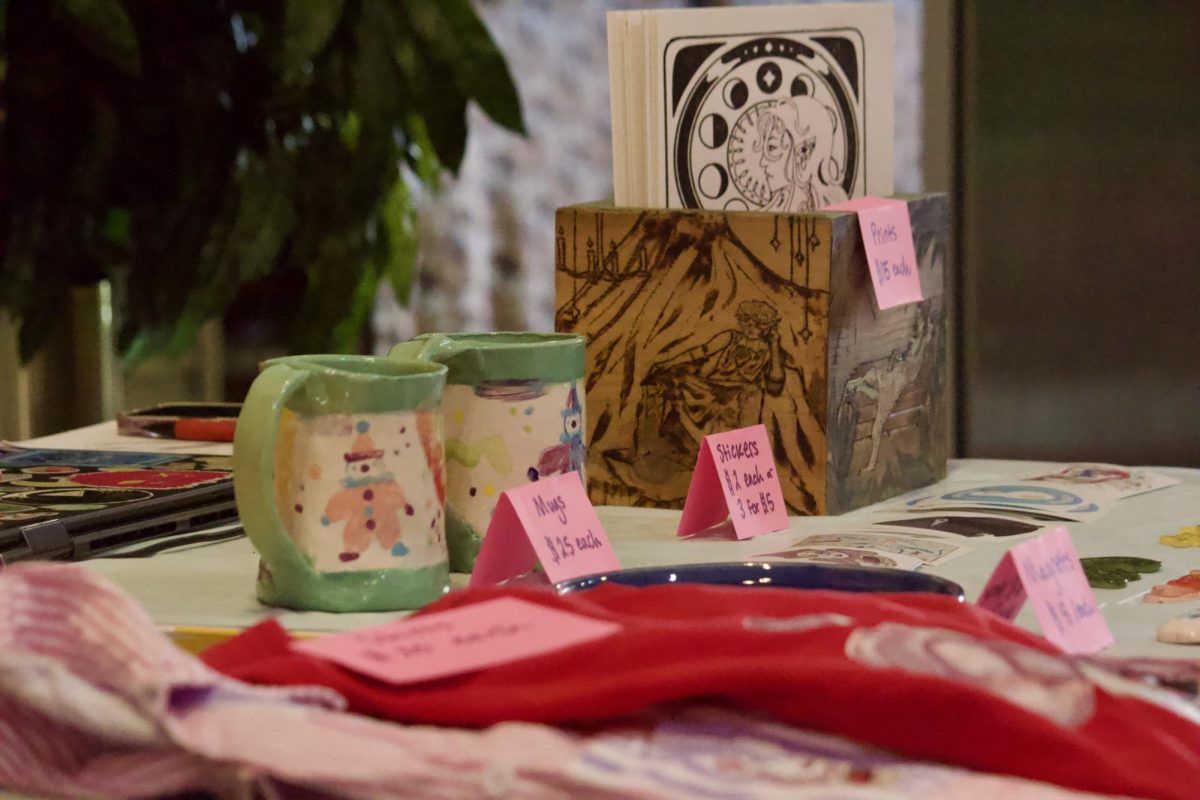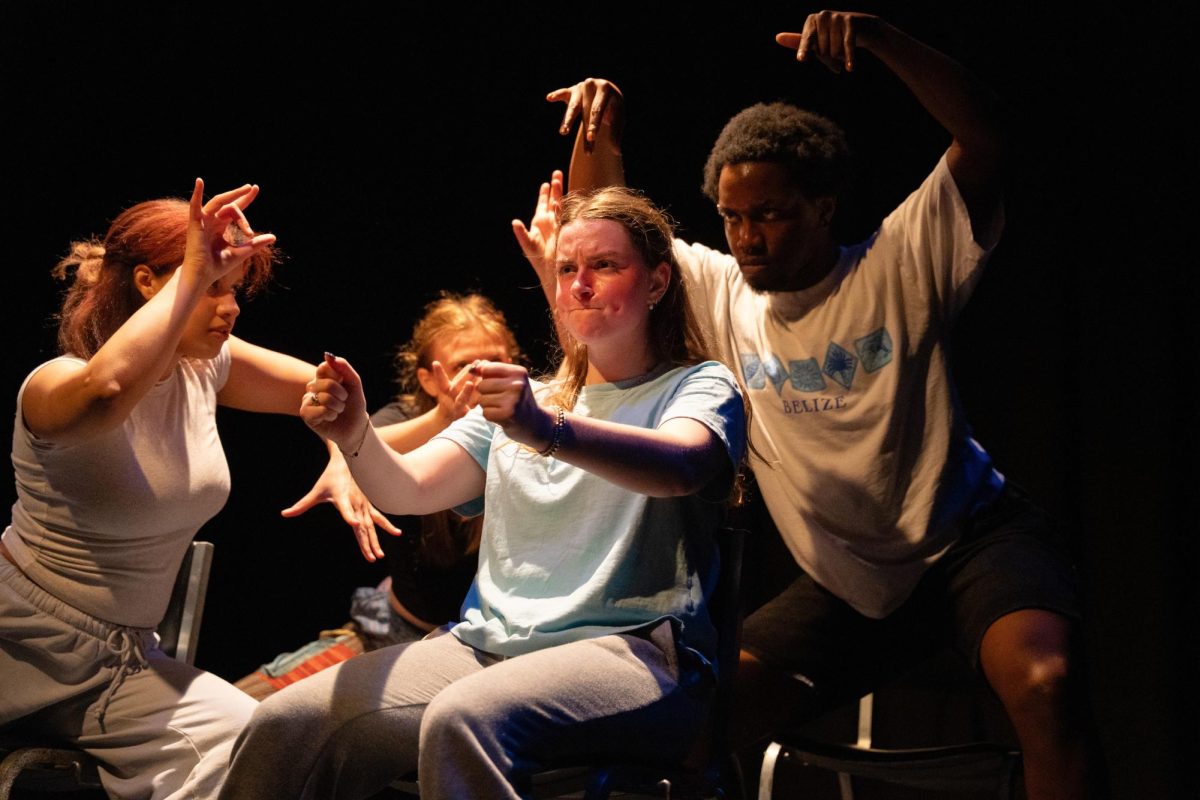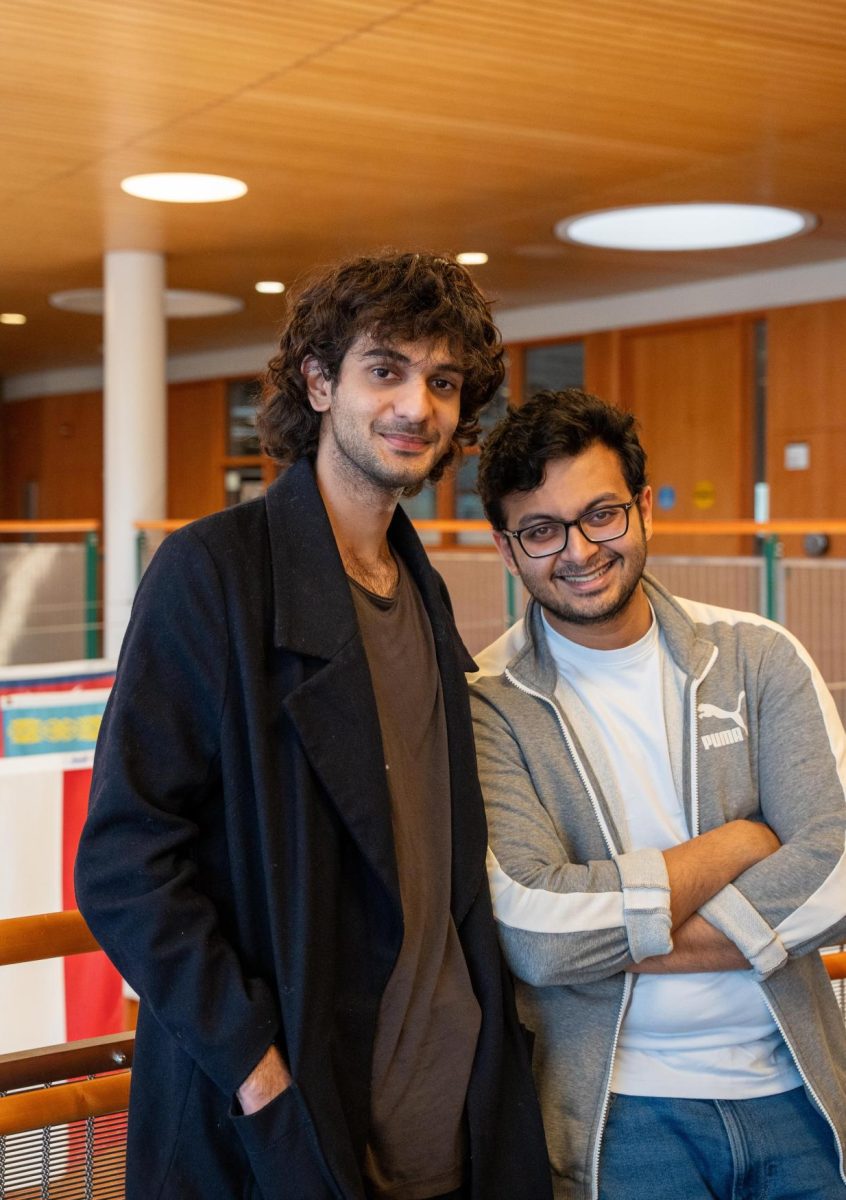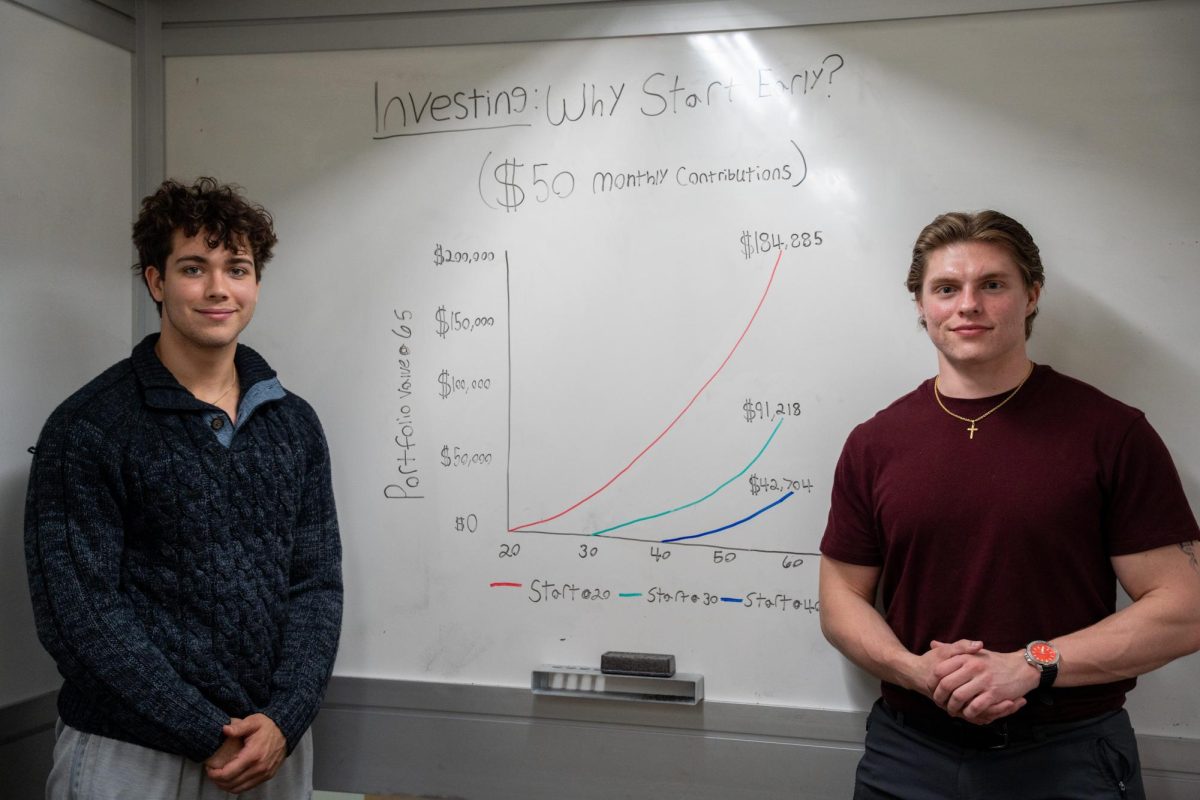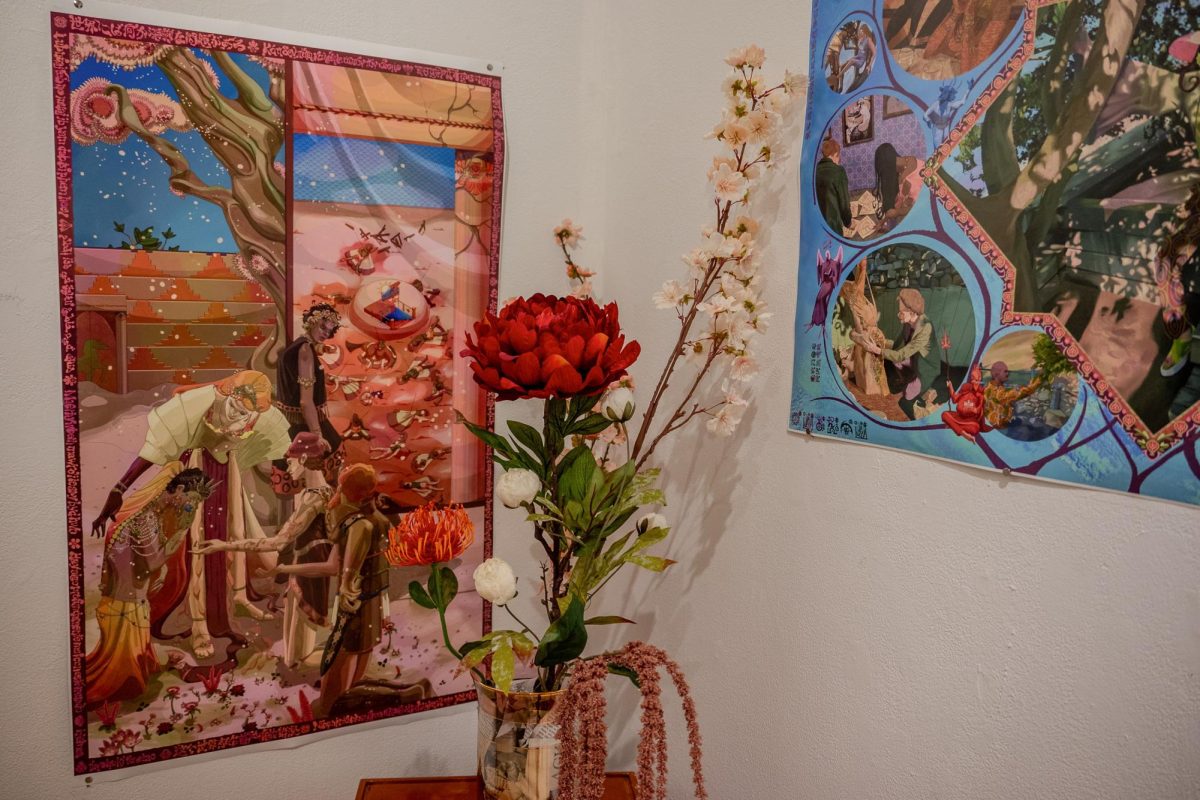Keli Vitaioli
vitaioli@grinnell.edu
In a contrasting display of tight leather stretched between sharp metal lines, Smith Gallery show, “Savage,” by Hazel Batrezchavez ’17, examines a multitude of connections between skin color and identification, such as being perceived as lesser “unconditioned” beings. The show consists of multiple metal-leather sculptures paired with wood block prints.
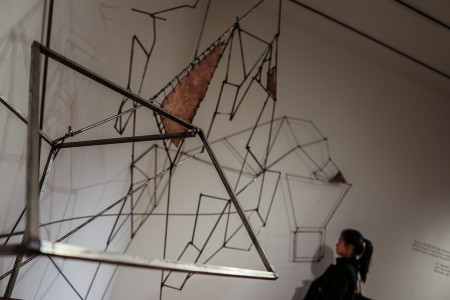
Batrezchavez sees the show as an ongoing conversation between her thoughts. She began with the idea of leather as a skin, stemming from the technical definition of stretching a material over another in sculpture to make a “skin.” While she may have started with just the process of using leather as a faux skin across the metal working, this led her to ask bigger questions on the many implications of human skin.
“I started to think about all the things that come with skin … which led me to race,” Batrezchavez said. “The whole reason the show is named ‘Savage’ is because that is the way Americans first described another group from them. Native Americans were described by orthographers as savage. [Today] there’s still that same connotation for people that are of different skin color.”
Batrezchavez sees her art as a means of examining her views on a range of topics. To her, it is an opportunity for discussing feelings and thoughts, and not a way to make any clear conclusion.
“I don’t want people to think my show is just one thing, this is all just a process for me. I spend a lot of time thinking about this kind of stuff and obviously I’m not done thinking about it. The way I think about art is as a process, and I’m not done with that process,” Batrezchavez said.
Coming to Grinnell expecting to be a painter, Batrezchavez has explored many different mediums during her time at the College. She is experimenting with welding and printmaking in this show, both techniques she learned within the past year. She attributes the variety of materials and strategies, in part, to the wide availability the College has to offer.
“I’m not concerned with my medium or what that is, I’m just concerned with absorbing the most I can,” Batrezchavez said. “Right now we have great resources around us to take advantage of.”
With an unconventional method for creating art, Batrezchavez worked without sketches for the pieces in the show. She came to her ideas through the process of creation and did not sit down with any one idea or piece in mind.
“[The show] reflects on the way I think about and make art. I didn’t make any sketches when I did these pieces, because that felt overwhelming, almost,” Batrezchavez said. “I did this process in reverse. I did the sculptures first, and I just went into the metal shop and just looked at the scrap metal. I just laid that on the floor in different shapes and welded it together, and those became my sketches without me realizing it.”








